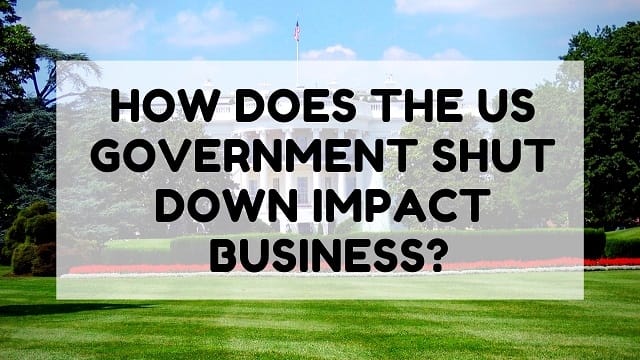The Recent US Government Shut Down at 35 days the Longest in History – reduced gross domestic product by $11 billion and had a significant effect on businesses and individuals alike.
With several thousand government employees laid off without pay it obviously put pressure on their finances which, in turn, would affect many different types of business as less money was being spent by these people in shops, online and elsewhere.
This meant businesses everywhere would be paying less in overtime and to contractors, so this in turn means less spending. Tax paperwork generated by businesses and other organizations wouldn’t be handled as the IRS, along with other government services, would be closed as the shut down dragged on.
What is a Government Shutdown?
As its name suggests, it’s literally a shutting down of certain federal government functions due to funds to keep them running not being confirmed – or ‘appropriated’.
This occurs when there is disagreement about allocations of funds. In the case of this record-breaking shut down that ran from 21st December 2018 to 25th January 2019, it was triggered by President Trump disagreeing with the Democrats on a budget for the extension of the wall to be built along the US/Mexico border.
President Trump wanted $5.7 billion allocated while the Democrats felt $1.6 was appropriate. This disagreement meant funding for government services couldn’t be ratified so a shut down ensued.
Essential services aren’t shut down, so those concerned with the preservation of life and maintaining safety such as defense, security and national safety continue working.
Business Suffers
Businesses Serving Local Marketplace – naturally businesses relying on trade from their locality and general foot traffic would be affected by people earning no money, so local shops and other trades such as home services would notice a downturn in work.
With an estimated one million government employees not receiving paychecks and in some cases asking for donations and running crowdsourcing campaigns to make some money to live on, decreased spending power was noticeable in many US communities.
Funding and Permits – businesses applying for government-related funding and permits to continue or expand their activities would be held up as the government departments handling these functions wouldn’t be operating.
For example, the SBA (Small Business Administration) couldn’t process loans during the shut down period; it’s a huge source of funding to business – it approved over $30 billion worth of funds to companies in 2017.
Governmental Online Support – even businesses just using governmental automated online services could be compromised; during this particular shutdown various federal websites fell into repair with several security certificates falling out of date because the websites were not being maintained.
Tourism Related – businesses reliant in full or partially on tourism are affected by a government shut down; attractions might shut or at least be scaled down due to staff shortages with either none or at best fewer government employees working whilst laid off.
As a result, businesses nearby serving the tourists such as bars, restaurants and some shops are affected.
Contractors – businesses offering contracted services to certain government departments can see their workloads drop considerably during a shut down. Specialist trades such as IT and engineering are typical of the types of contractor help and expertise the government might use on a regular basis.
Other Government Shut Downs
Various government shut downs have occurred previously; there have been 12 in all since 1981. The previous longest at 21 days was under President Clinton during December 1995 into January 1996, and a shut down ran for 16 days during President Obama’s term due to disagreements over the funding of the Obamacare program. It remains to be seen whether or not there are more shut downs on the horizon given the disputes between the Trump administration and his opponents.

